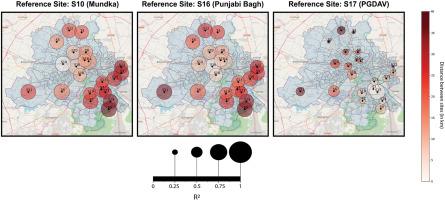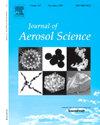Assessing the spatial transferability of calibration models across a low-cost sensors network
Abstract
Low-cost sensor networks (LCSNs) are expanding worldwide to gather high spatiotemporal resolution data due to their economic feasibility and compact size. The reliability of LCS-recorded data is limited due to their calibration dependencies in the field. Previous studies have focused on the development of LCS calibration models by co-location with the regulatory monitoring stations. However, it is challenging to calibrate LCS in the field for countries with limited infrastructure for air quality monitoring, pointing towards the need for transferable calibration models. Only a few studies have addressed this challenge and provide no information on the factors that may affect the performance of transferable calibration models. Here, we examined the spatial transferability of the calibration models developed using machine learning (ML) algorithms for an LCSN with twenty-two (22) sites in NCT-Delhi. The site-specific calibration models performed well at each site with high R2 and significantly low RMSE values. These models were transferred to the other sites, and the effect of distance between the sites (D), source composition, PM ratios, and particle size distribution (PSD) on the transferability of calibration models was investigated. The models developed at the Mundka (S10) and Punjabi Bagh (S16) sites complied with the evaluation criterion (R2 ≥ 0.70) for each site, irrespective of the distance between the sites. Furthermore, PM ratios reported by the LCSs did not significantly differ across sites, suggesting that the PMS algorithm provides a proxy of the size-resolved mass fractions. Evaluation of the PSD at different sites supported our findings. We also introduced the concept of selecting representative locations for LCS co-location by computing transferability scores using k-means clustering and presented a reference map for NCT-Delhi for developing scalable calibration models.


 求助内容:
求助内容: 应助结果提醒方式:
应助结果提醒方式:


